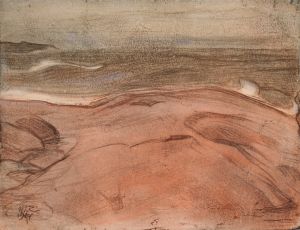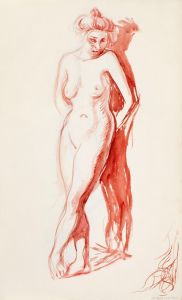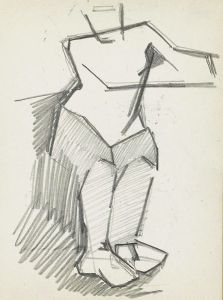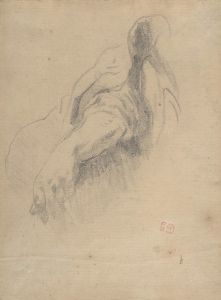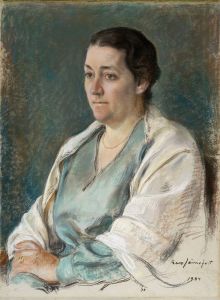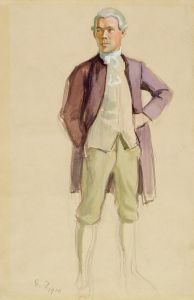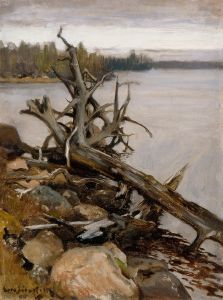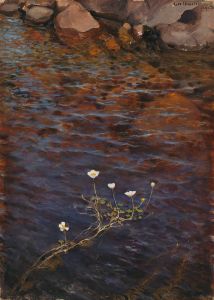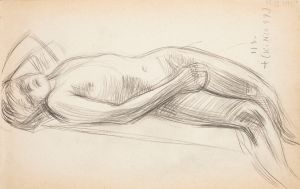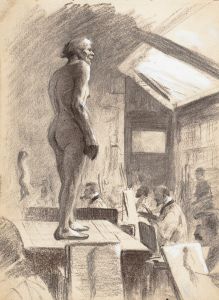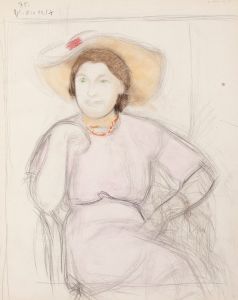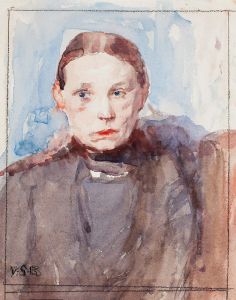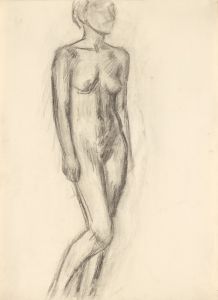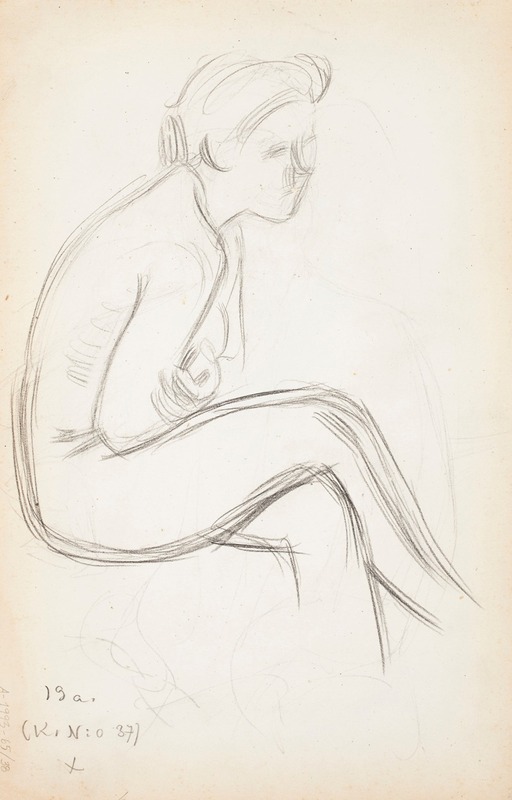
Alastonmalli. Todennäköisesti 1909.
A hand-painted replica of Eero Järnefelt’s masterpiece Alastonmalli. Todennäköisesti 1909., meticulously crafted by professional artists to capture the true essence of the original. Each piece is created with museum-quality canvas and rare mineral pigments, carefully painted by experienced artists with delicate brushstrokes and rich, layered colors to perfectly recreate the texture of the original artwork. Unlike machine-printed reproductions, this hand-painted version brings the painting to life, infused with the artist’s emotions and skill in every stroke. Whether for personal collection or home decoration, it instantly elevates the artistic atmosphere of any space.
Eero Järnefelt was a prominent Finnish painter, known for his contributions to the realist art movement in Finland. Born on November 8, 1863, in Vyborg, which was then part of the Grand Duchy of Finland, Järnefelt was part of a culturally influential family. His siblings included the composer Armas Järnefelt and writer Arvid Järnefelt. Eero Järnefelt studied art in Helsinki, St. Petersburg, and Paris, where he was influenced by the naturalist and realist movements that were prevalent in Europe during the late 19th century.
One of Järnefelt's works is "Alastonmalli. Todennäköisesti 1909." The title translates to "Nude Model. Probably 1909." This painting is an example of Järnefelt's exploration of the human form, a subject that many artists of his time engaged with as part of their study of anatomy and the human condition. The painting is believed to have been created around 1909, a period when Järnefelt was actively producing works that depicted both the Finnish landscape and human figures.
Järnefelt's approach to painting was deeply rooted in realism, and he often sought to capture the essence of his subjects with meticulous attention to detail. In "Alastonmalli," this is evident in the careful rendering of the human form, which reflects his academic training and his commitment to portraying subjects truthfully. The painting likely served as a study of the nude, a common practice among artists to refine their skills in depicting the human body.
The context of this work is important to understand Järnefelt's artistic intentions. During the late 19th and early 20th centuries, Finnish art was undergoing a transformation, with artists seeking to establish a national identity through their work. Järnefelt, along with his contemporaries, played a significant role in this cultural movement. While "Alastonmalli" focuses on the human figure, it is part of a broader body of work that includes landscapes and portraits, all of which contribute to the understanding of Finnish identity and the natural environment.
Järnefelt's work is characterized by its clarity and precision, qualities that are evident in "Alastonmalli." His ability to convey the subtleties of light and shadow, as well as the textures of skin and fabric, demonstrates his technical skill and his dedication to realism. This painting, like many of his others, reflects his interest in capturing the beauty and complexity of the world around him.
Eero Järnefelt's contributions to Finnish art are significant, and his works continue to be celebrated for their artistic merit and cultural importance. "Alastonmalli. Todennäköisesti 1909." is a testament to his skill as a painter and his commitment to exploring the human form through the lens of realism. Järnefelt passed away on November 15, 1937, but his legacy endures through his paintings, which remain an integral part of Finland's artistic heritage.





